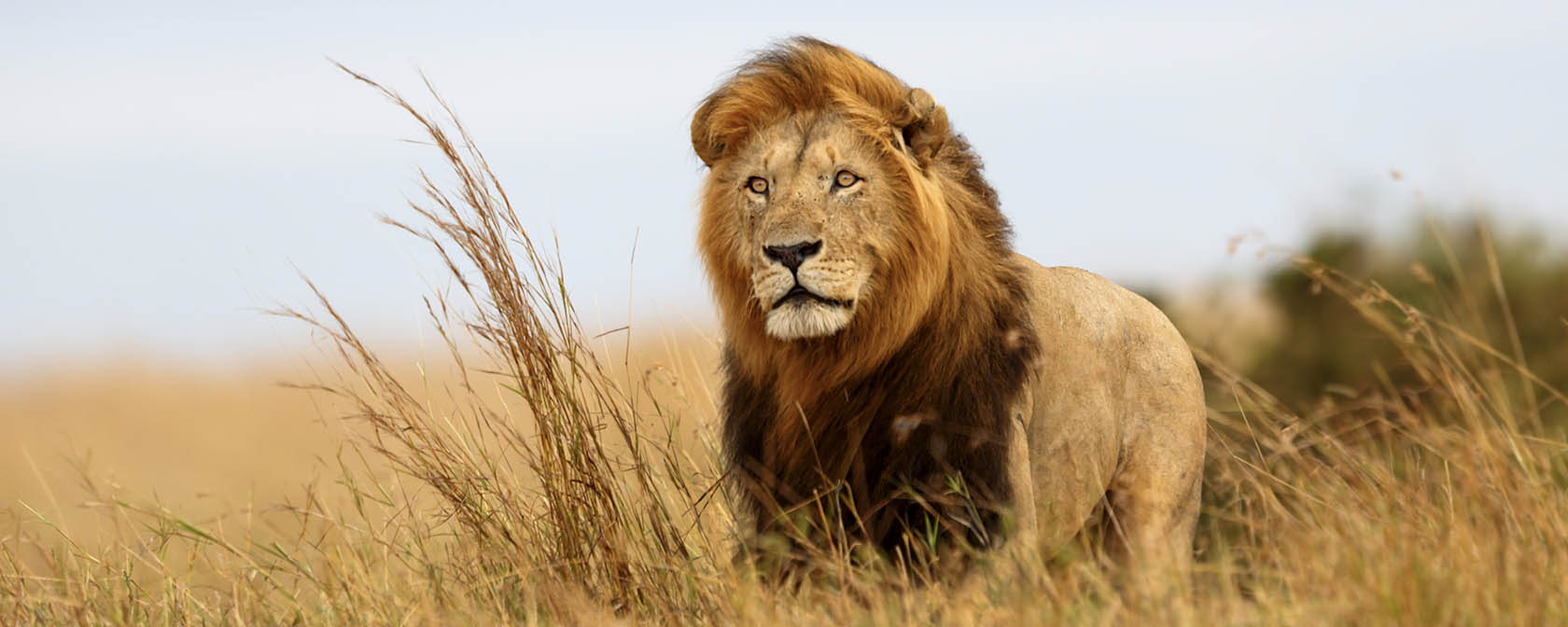By Sara Amundson and Kitty Block
It has been six years since the death of Cecil, a male lion who was a popular individual for wildlife viewing tourists visiting Hwange National Park in Zimbabwe. The heartbreaking details of the hunt that killed Cecil made international headlines: Cecil was lured out of the protected area with elephant carcass bait and shot by the hunter with an arrow. After suffering for 10 agonizing hours, Cecil was killed with a gunshot.
We believe it is important to remember Cecil’s story. We owe it to him and to the thousands of animals killed by trophy hunters each year to expose the cruelty of the hunts that claim their lives. Commemorating the anniversary of Cecil’s death, a new report by Humane Society International/Europe released earlier this week in six languages gives new insight about the demand driving the deaths of these animals. “EU Trophy Hunting by the Numbers” reveals that the European Union is the second biggest importer of hunted wildlife trophies after the United States.
What the trophy numbers show
Trophies are the horns, tusks, teeth and other body parts that hunters bring home from their killing sprees abroad. In the five-year period we analyzed (2014 to 2018), the EU imported trophies taken from 889 African lions, 229 of whom were wild lions like Cecil. Following the listing of the African lion under the U.S. Endangered Species Act in 2016 which placed federal import restrictions on the species, EU has surpassed the U.S. as the largest importer of African lion hunting trophies.
We also found that trophy hunters from the EU imported nearly 15,000 trophies from 73 “internationally protected species,” including African lions, African elephants, leopards, giraffe, cheetahs, critically endangered black rhinos, zebras, dwindling Argali sheep and vulnerable polar bears. During the same time period, the EU stood as the largest importer of cheetah trophies in the world.
Imports of trophies into the EU is rising, according to trade data from the Convention on International Trade in Endangered Species of Wild Fauna and Flora (CITES): Between 2014 and 2018, imports of trophies have steadily increased by almost 40%. Despite these staggering statistics, opinion polls reveal that EU citizens deplore trophy hunting—over 80% of those surveyed oppose the practice.
Yet trophy hunting stubbornly continues. Germany, Spain and Denmark account for 52% of all EU imported trophies. Namibia, South Africa, Canada and the U.S. are among the largest exporters of trophies to the EU. European trophy hunters are also coming to the U.S. to kill animals. American black bears, brown bears, mountain lions and gray wolves are among the top trophies exported to the EU.
How to take action against trophy hunting
We have often called attention to the damage that American trophy hunters have done to wild animals, at home and abroad. With the new HSI/Europe report, the verdict is out: The collective carnage of globe-trotting European and American trophy hunters seeking out rare animals to kill for their collections is a global embarrassment.
Fortunately, several countries within the EU and beyond have taken actions or are considering measures to stamp out trophy imports. France and Australia have banned the import of lion trophies since 2015. The Netherlands banned trophy imports of over 200 species in 2016. Just last month the UK government reiterated its commitment to soon introduce the world’s toughest trophy import ban. Two political parties in Germany have included a trophy import ban in their party manifestos.
European policymakers are increasingly challenging the status quo of governments allowing trophy imports without robust scientific and conservation scrutiny and are demanding change. This week, HSI/Europe co-hosted a webinar on trophy hunting with the European Parliament’s interest group, Members of European Parliament for Wildlife and several other leading conservation and animal groups. The groups highlighted how trophy hunting is incompatible with preserving biodiversity and jointly called for a ban on trophy imports into the EU.
German MEP Manuela Ripa hosted the event and said: “[I]n the wake of the EU Biodiversity Strategy it is important to consider the impact that European citizens traveling to far-flung destinations solely to shoot and bring home animal body parts may be having on wild animal populations elsewhere around the world. Instead of having tightly regulated trophy hunting, I pledge for tightly regulated ‘photo hunting’ which would have a bigger benefit for species, support ecosystems and communities involved.”
The growing actions taken by policymakers around the globe make it more imperative that the U.S. catch up to the international momentum to end trophy hunting. We were encouraged this week when a United States House of Representatives appropriations subcommittee approved language prohibiting the U.S. Fish and Wildlife Service from issuing trophy hunting import permits for lions and elephants taken in Tanzania, Zimbabwe or Zambia. Among other steps, the U.S. Congress must reintroduce and pass the Prohibiting Threatened and Endangered Creature Trophies Act (ProTECT Act), which would help prevent the hunting of any species listed as endangered or threatened under the Endangered Species Act as soon as possible. And the Biden Administration must reform the trophy import permit process to protect animals and affirm the conservation goals supported by millions of Americans.
Kitty Block is President and CEO of the Humane Society of the United States.




